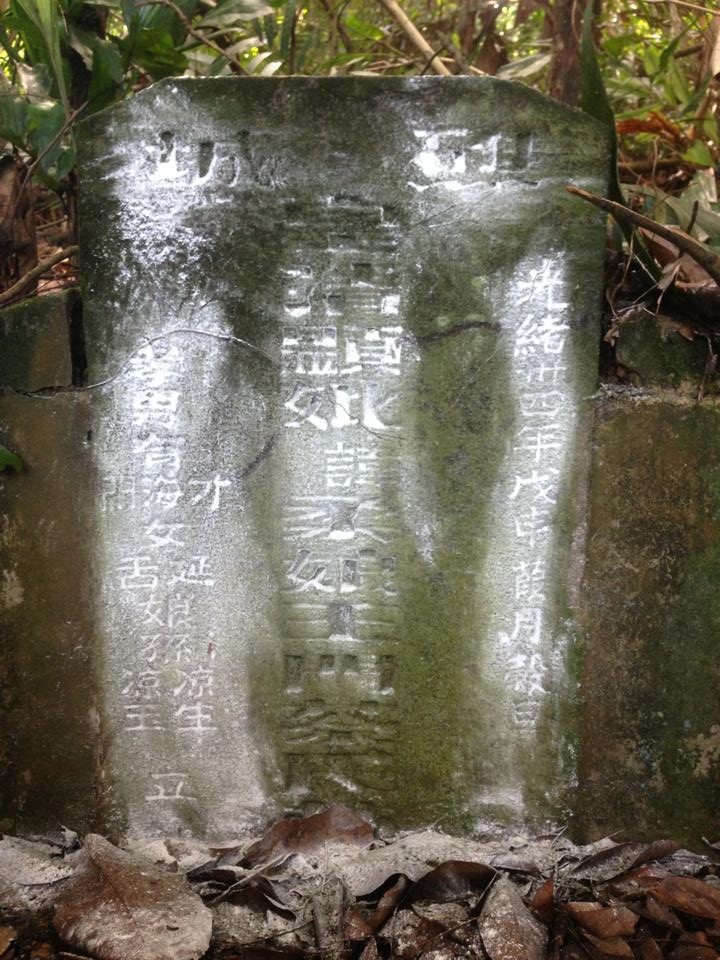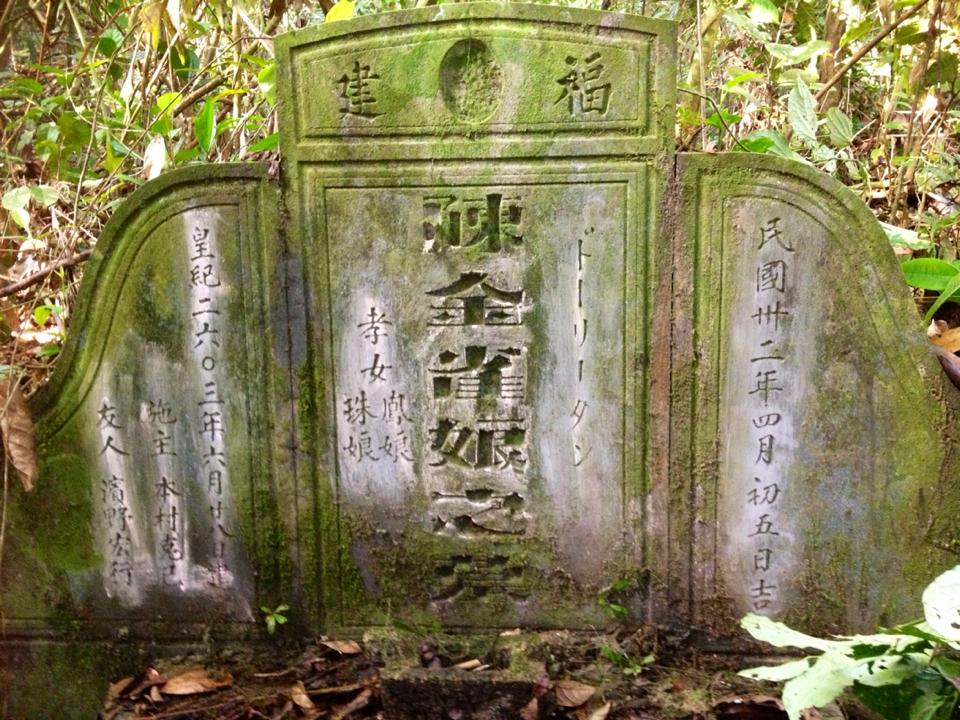The “Reign” Years
1
by Jason Kuo ( 郭子澄)
A unique feature of some of the graves in Bukit Brown is the inclusion of the “Emperors’ Regnal Years or Eras” inscribed on the tombstones. Just as the British refer to the Victorian or Edwardian eras and America, the antebellum years, the regnal years speak to the milieu of the times under each emperor’s rule.
The regnal years are also sometimes combined with the Chinese zodiac year (天干地支), which is a 60- year cycle with each year represented by one of 12 animals (十二生肖), and each animal appearing five times in the cycle to form 60 years.
The inscription on this tomb in the Greater Bukit Brown area is of the 34th year of the Emperor Guangxu (光绪)and the zodiac year of the monkey. Guangxu’s first year of rule began in 1875, so his 34th year would be 1908 of the Gregorian year which was the year of the monkey. The deceased died in 1908, also the year Guangxu died.
With the exception of a long-reigning emperor, such as Qianlong (乾隆), any zodiac year most likely falls only once during each emperor’s reign in the last 150 years of the Qing Dynasty (清朝). For example, the year jiawu (甲午) – the year of the horse – only fell once during the reign of Guangxu. Thus the Jiawu of the Guangxu reign (“光緒甲午年”) is roughly 1894 of the Western era. This was the year of the First Sino-Japanese War, when Taiwan was ceded to Japan.
Four years later in 1898, Emperor Guangxu launched his abortive reform programme. Known as the 100-days reform (百日维新), its failure led to the execution of martyrs, the house arrest of the emperor (and continued rule by the Empress Dowager Cixi 西太后慈禧), and increasing radicalization of Chinese intellectuals. Emperor Gyangxu’s reign, was marked by defeat at the hands of the Japanese, and failure to push through reforms aimed at improving the lives of the Chinese.
Xinhai (辛亥)– the year of the pig – in 1911 was the year of the Wuchang Uprising (武昌起义) that eventually toppled the Qing dynasty. With the demise of the Qing dynasty, the “reign” title becomes Minguo 民国(民國), the republic.
This tomb shows the Mingguo year 32 on the left shoulder. Add on 11 and the year of death is 1943 in the Gregorian calendar, when Singapore was under Japanese occupation. The tomb is also inscribed with the Japanese Imperial calendar year of 2603 on the right shoulder. The Imperial year 1 (Kōki 1, 皇纪) was the year when the legendary Emperor Jimmu (神武天皇) founded Japan in 660 BC, according to the Gregorian calendar. By subtracting 660 from the Japanese imperial calendar year of 2603, we arrive at the equivalent Gregorian year of 1943.The tomb belongs to Dolly Tan whose name is inscribed in Japanese as : “Do-Ri-Tan,” to the the right of the Chinese name.
Taiwan still uses the Minguo “reign” year calendar, alongside the Gregorian calendar. This year, 2013, is Minguo 102.
About Jason Kuo (郭子澄): Born in Taiwan to mainland Chinese parents, Jason came to Singapore when he was six. Educated in Nanyang and Chinese High, he was drawn to Chinese history in particular, because as a child of of refugees, he wanted to understand his roots. He says growing up in Singapore was a wonderful experience as he was exposed to a great variety of languages and cultures. Jason, now works and lives in Hong Kong.
Further observations by the writer on the inscriptions on Dolly Tan’s tomb:
The modern Japanese dating system is identical to the Chinese imperial system. Each emperor’s reign is marked by a reign title. The current emperor’s reign title is Heisei 平成, beginning in 1989. The prior emperor ascended the throne in 1925, and was one of the longest serving monarchs in history. The Showa 昭和 reign began in 1925, and covered the years when Singapore was brutally ruled as Shonan-To 昭南島 [i.e., the southern island of Showa]. As the old emperor entered his 60th year of reign, the Japanese government was still putting out budget proposals that extended to Showa 100 or beyond, since an emperor’s mortality should never be questioned. I’m also intrigued that the tomb uses the lunar dating system even though the year is already Minguo [Minguo 32. 5th day of 4th moon], but in the Japanese rendition it kept the Gregorian system [Imperial year 2603, June 28]



Just to tidy this up. The proper term for “reign” years is regnal years. This was a common practice when there were monarchs. See e.g. http://en.wikipedia.org/wiki/Regnal_year